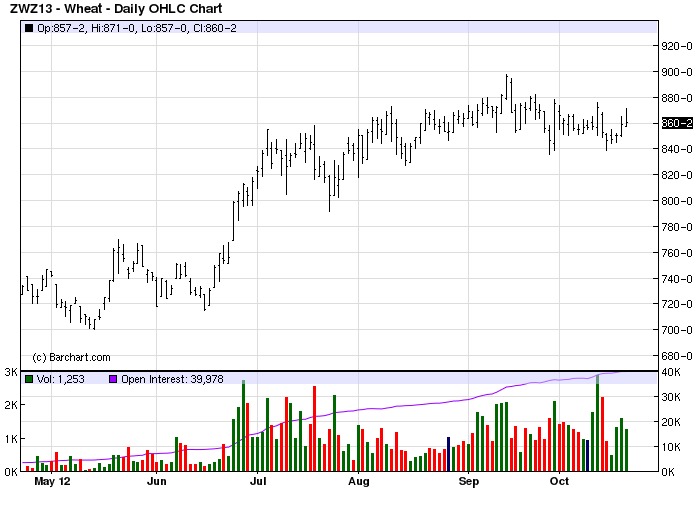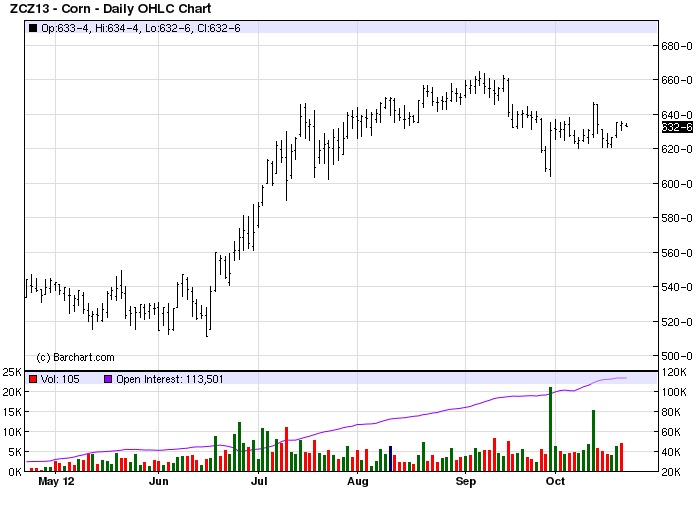My equity balance is $26735.07 this week, with a net loss of $812.5 from $312 loss on each of the three March corn contracts I invested, and $62.50 gain from each of the two January soybean contracts. Thus, I have a gain in short for soybeans for $125, and a loss in corn for $937.50
Rationale for long on corn:
Although the technical analysis have indicated that the prices for corn is trending down in the past couple days until now (Oct 25-29), I am planning to hold it over the course of this week in anticipation that corn prices would rebound up above the previous level above my price-in, $1536. Turns out that I am not certain about the correlation between corn and soybean prices, but the downward movement of soybean prices creates pressure on corn prices such that corn is at its lows in mid-October. Corn and soybeans might be reacting to a common demand shock such that they have price linkages, because these two commodities have similar required production conditions.
Short for soybeans:
There has been anticipation that there is a positive supply shock in soybeans. The market has large in-flow of soybean supply due to a bumper crop year ’13 for Brazil and Argentina. There is an expectation for the bumper crop year due to better weather conditions favourable for soybeans. Therefore, I think soybean prices will continue to trend downwards.
This week, I have a small gain of $125 for two soybean contracts, and only a loss of 937.5 in corn. Thus, my net loss is $812.5. I will continue to invest on soybeans; possibly acquiring more long contracts for soybeans if prices continue to go down.

